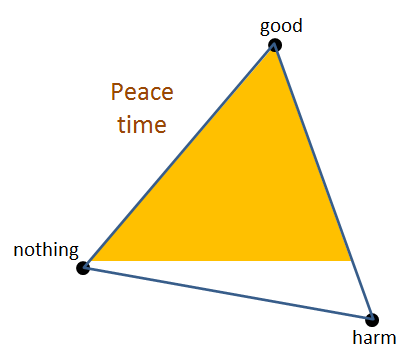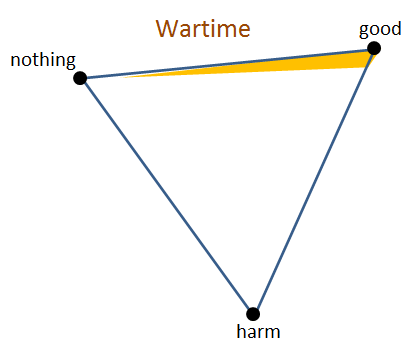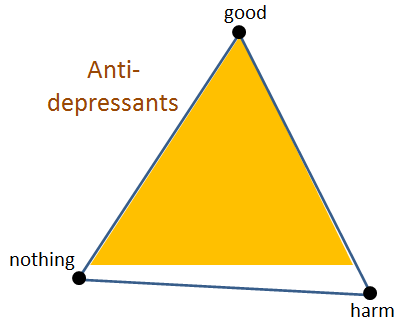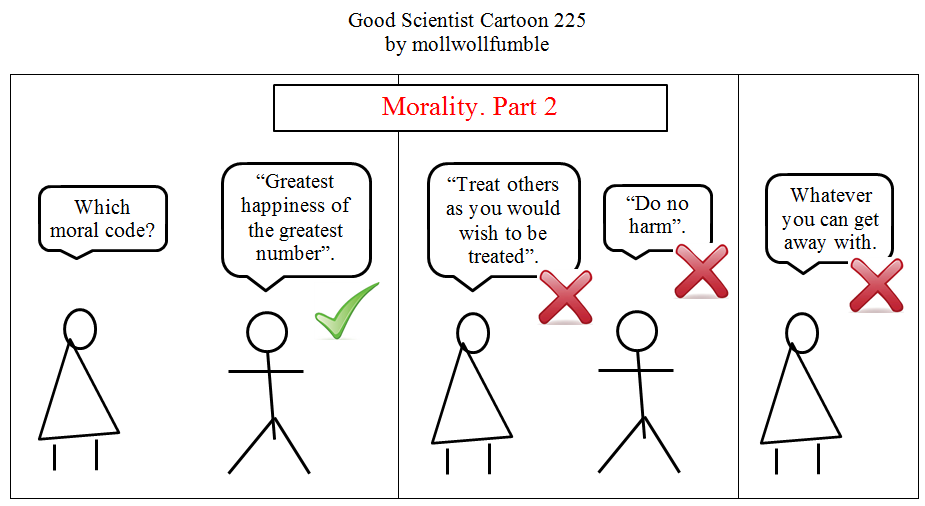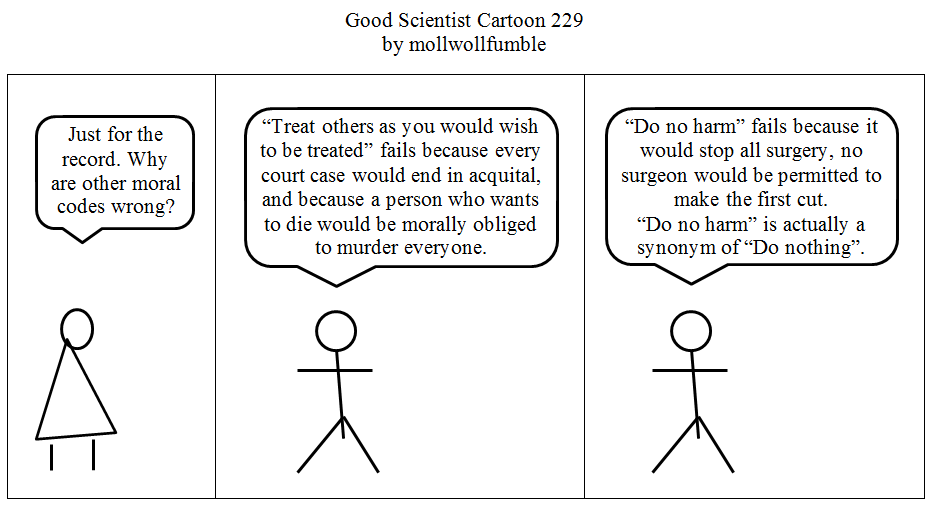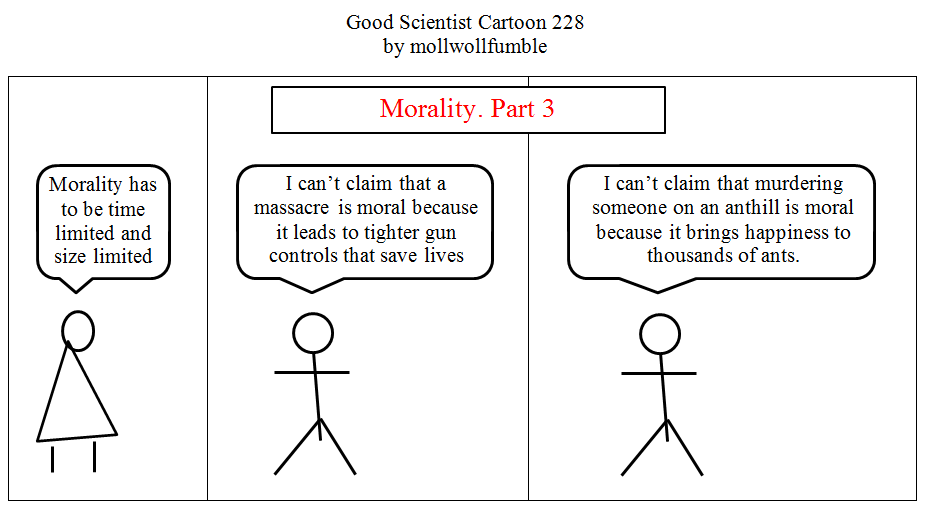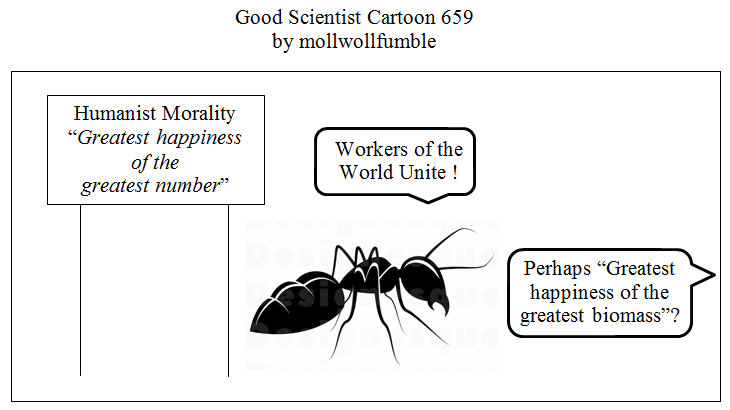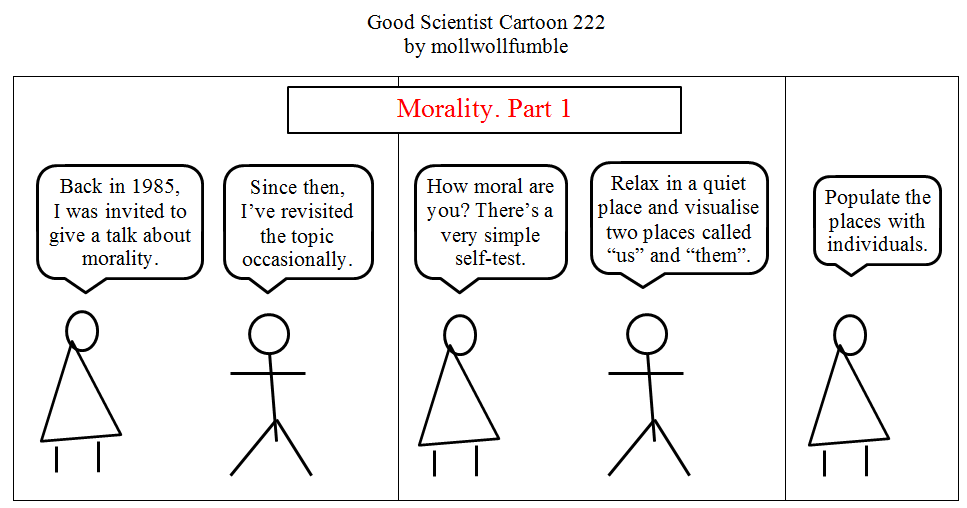(This thread has nothing to do with sex).
Back in 1983 I was asked to give a talk about morality. For this talk, I invented the morality triangle.
There are two other facets to morality that I haven’t seen discussed elsewhere:
- the distinction between secondary effects and reactions.
- (one I’ve included in Good Scientist cartoons 222 to 223 that I don’t need to discuss right now).
I assume that you’re all familiar with the work of Jeremy Bentham. If not, just follow along. The Australian legal system is heavily based on the British legal system, which is heavily based on the work of John Stuart Mills, which is heavily based on the work of Jeremy Bentham. So you see that this is not just airy fairy moralising, this is a very practical system of morality. Bentham removed a lot of the whimsy of the legal good and bad. His work is known as “moral calculus” and is best known by its summary “the greatest happiness of the greatest number”.
The two main contemporary criticisms of Bentham’s work are that it is hedonistic (based on happiness) and that it doesn’t always work on the dichotomy of guilty/innocent. It may be right to convict an innocent person in order to avoid the harm caused by a riot.
On to “the distinction between secondary effects and reactions”. I’ll start with reactions. The Port Arthur Massacre sent shock waves around the world. The massacre itself was bad, but it led directly to the gun buyback scheme which is good. So can I say that overall the actions of Martin Bryant were good because the gun buyback scheme has saved more lives than the massacre itself took? No. The gun buyback scheme was a reaction, not a secondary effect. Reactions don’t count in measuring morality. To take another example, the Great Pyramid in Giza. Khufu bankrupted his country and caused untold hardship by his construction which in itself is bad. But it led directly to tourism which has greatly enriched Cairo between then and now. The tourism has enriched Egypt more than the Great Pyramid has impoverished it but, because the tourism is a reaction not a secondary effect, Khufu’s actions remain morally bad.
Secondary effects are different. Every action has good and harmful components. Every surgery requires an incision or other harmful process (such as burning) in order to do good by removing disease. Let’s use civil engineering as a guide to secondary effects. Construction is good, but … Each construction requires some destruction to start with, that’s a bad secondary effect. Another secondary effect is the probability of failure, which is also bad. And then there’s a third aspect of how happy (or how less unhappy) the construction makes its users, which includes aesthetics. Bad aesthetics would count as a third harmful side effect. Using Bentham’s methods, sum up the good primary effects and harmful secondary effects and get ready to plot both on what I’m calling the Morality Triangle.
The triangle plot is widely used in geology. It’s based on the geometric principle that for every point in an equilateral triangle of side 1, the sum of the distances from that point to all three sides is a constant, 100%. Here’s a typical example from geology:
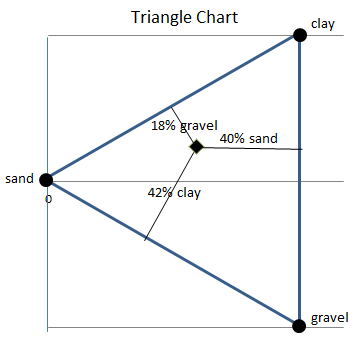
And here’s how it applies in morality, plotting primary good (or bad) effect in terms of gross happiness, and secondary bad (or good) effect in the same terms. “Doing nothing” includes rejection, delay and procrastination.


To be continued.
